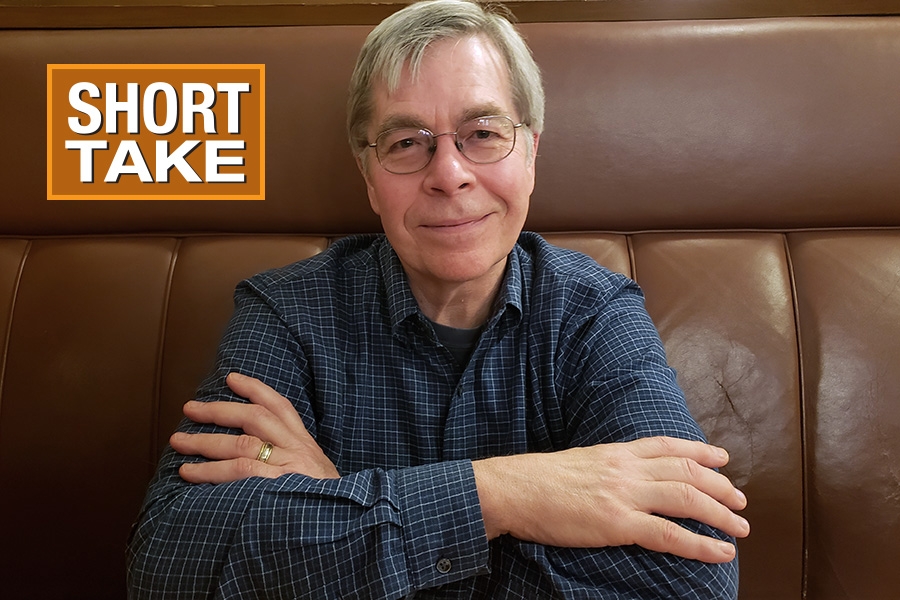Economist Thomas Potiowsky discusses Oregon’s employment prospects.
Thomas Potiowsky, director of Portland State University’s Northwest Economic Research Center, gives his take on where Oregon’s economy is leading and where it might run into trouble in the coming years.
Excerpts have been edited for length and clarity.
With manufacturing jobs declining nationally, how has the sector held up in Oregon?
Oregon has lost jobs in manufacturing, but not at the same rate as the rest of the country. Manufacturing jobs in Oregon have stayed more stable because of Intel, and the fabrication plants where they produce the chips. Intel has been very consistent about when they move forward. Even in recession they’ll put money into research and development. If Oregon continues to be the backbone of Intel’s R&D, that bodes well for the future.
How has Oregon’s timber industry reacted to automation?
Wood products are now a high-tech industry. They have computers and 3D imaging of the logs. They have everything programmed so they know the exact amount of timber they need on the market each day. There’s no waste. This [automation] has led to job losses in the area, and that mirrors the state of manufacturing in the nation overall. The output has remained stable, but the employment has fallen.
How have the Trump administration’s policies affected the state?
We’re at a point with Oregon’s natural population where births and deaths are equal. You get population in one of two ways, the natural way, which is births minus deaths, and immigration. So all population growth is going to be based on net migration.
You also hear the tech sector complaining about how they can’t get their H1-B visas, which becomes more and more important as the state reaches full employment. It’s affecting the ability of businesses to grow.
With companies like Genentech moving to Portland, do you see any potential for biotech industry in Oregon?
I just don’t see us as a biotech center. [OHSU] did great with the Knight money, but the R&D needed for medicine is huge. We’re not going to be like San Diego or Boston, the synergism and money needed to be a major player in biotech is such a tough nut to crack. I just don’t buy it.
How do you see driverless trucks affecting Oregon’s workforce?
It’ll be interesting to see what happens with Daimler and its driverless trucks division.
The question is, what happens to you if you’re in your late fifties, and you’re a truck driver, and you lose your job? If we can identify areas where there’s a skill mismatch then options for retraining become available. To what extent does this free workers to do something else? If we can identify the areas these workers are needed, we can alleviate a bit of the pain when technology replaces someone.
How can human workers compete with automation?
What we’re seeing overall is the skills we’re lacking are the personal skills. The medical field, for example, has become highly [computerized.] What we’re lacking is good old doctor’s bedside manner.
In Europe, when you go to the grocery store, you tell the produce person what you want and they pick it out for you. They talk to about you what you’re making, how much you need and they find what you’re looking for. It’s these personal touches that artificial intelligence can’t replicate at the moment.
I don’t know how you train empathy, but management is taught at business schools, and those are personal skills.
RELATED STORY: Ten Takeaways From Oregon’s Economic Forecast
Why have Oregon’s rural communities struggled when the state economy is so strong?
For better or for worse, urban areas provide a lot more opportunities than rural ones. Rural areas have a slightly lower crime rate, land values are less, but you only have one or two main employers. If something happens to one of them, choices become very limited. We thought telecommuting would make it easier to live in these areas but it hasn’t happened.
How have Oregon’s coastal communities adapted to the changing economy?
We just had our Pacific Northwest regional economic conference in Seaside. The mayor gave a speech at the convention center where he claimed [the center] has allowed more seasonal businesses to stay open year-round. People are coming to Seaside in February, when it would normally be a ghost town. If you can keep businesses open year–round, that means more people might live there year–round, which allows the city to grow. In order to survive, rural areas might have to become a bit more like urban areas.
What do you see as the biggest challenges for Oregon’s economy in the future?
There are jobs everywhere in the country now, not just here, so people don’t necessarily have to move to find work anymore. If you’re from LA or San Francisco or Seattle, land costs and house costs look pretty good here. We’ve attracted a lot of young, educated people. What we have to figure out is how to avoid losing those people. If housing costs get too high that’s a problem. We have to hope housing prices don’t rise too fast, giving income a chance to catch up.
To subscribe to Oregon Business, click here.



